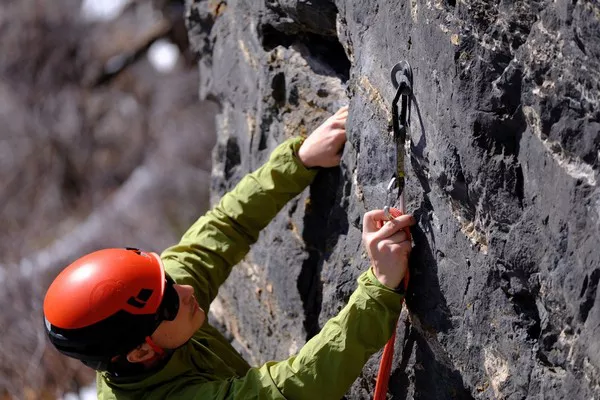Climbing carabiners are the unsung heroes of any climber’s gear ensemble. These essential pieces of equipment are not only crucial for safety but also greatly impact performance and overall climbing experience. With a myriad of options available on the market today, selecting the right climbing carabiner can be overwhelming. This comprehensive guide aims to break down the key factors to consider when choosing the best climbing carabiner for your needs.
Understanding Climbing Carabiners
Before diving into the selection process, it’s essential to understand the basic anatomy and functions of climbing carabiners. A typical climbing carabiner consists of a metal loop with a spring-loaded gate used to quickly and securely connect various components of a climber’s gear. The gate can be locked or unlocked, and different shapes and designs cater to specific climbing needs.
Types of Climbing Carabiners
Climbing carabiners come in various types, each designed for specific purposes:
- Standard Carabiners: These are versatile and commonly used for general climbing purposes.
- Locking Carabiners: Equipped with a mechanism to prevent accidental opening, these are crucial for safety systems.
- Belay Carabiners: Specifically designed for belaying, these often have a larger basket to accommodate more gear.
- Wiregate Carabiners: Lightweight and resistant to freezing shut, ideal for minimizing weight on gear.
- HMS (Pear-shaped) Carabiners: Suitable for Munter hitch knots and belaying with a tube-style device.
Each type of carabiner serves a specific function, and a well-rounded climbing kit often includes a combination of these types.
Key Considerations in Choosing a Climbing Carabiner
- Strength and Durability: Look for carabiners that meet UIAA (International Climbing and Mountaineering Federation) standards for strength. Pay attention to major (closed gate) and minor (open gate) axis strength ratings.
- Gate Type: Choose between straight gate, bent gate, or wiregate depending on your preference and specific use-case scenarios.
- Weight: Consider the weight of the carabiner, especially for alpine or multi-pitch climbing where every gram counts.
- Size and Shape: Opt for carabiners that suit your hand size and feel comfortable during use. Larger carabiners can be easier to handle but may weigh more.
- Gate Action and Feel: Test the gate action to ensure smooth operation and easy clipping.
- Locking Mechanism: For locking carabiners, evaluate the ease of use of the locking mechanism. Some climbers prefer twist-lock while others prefer auto-locking mechanisms.
- Price and Value: Balance quality with budget. Investing in higher-quality carabiners can provide added safety and longevity.
Popular Brands and Models
Numerous reputable brands offer a range of climbing carabiners tailored to different needs:
- Black Diamond: Known for innovative designs and quality construction.
- Petzl: Renowned for ergonomic designs and excellent performance.
- DMM: British brand offering a wide range of high-quality carabiners.
- Camp: Produces lightweight and durable carabiners ideal for alpine climbing.
- Metolius: Specializes in robust, no-frills carabiners favored by trad climbers.
Popular models like the Black Diamond HotForge Screwgate, Petzl Spirit, DMM Phantom, and Camp Photon Wire are often recommended by climbers for their reliability and performance.
Specialized Uses and Features
Certain climbing activities require specific features in a carabiner:
- Big Wall Climbing: Look for durable and large capacity carabiners suitable for hauling gear.
- Ice Climbing: Opt for wiregate carabiners that resist freezing shut in cold conditions.
- Trad Climbing: Choose robust carabiners that can withstand repeated use with passive protection like nuts and cams.
- Sport Climbing: Consider lightweight carabiners for quickdraws to reduce weight on your harness.
Caring for Your Climbing Carabiners
Proper care and maintenance will extend the lifespan of your climbing carabiners:
- Regular Inspection: Check for signs of wear, such as sharp edges, cracks, or gate malfunction.
- Cleaning: Wash carabiners with mild soap and water to remove dirt and grime.
- Storage: Store carabiners in a dry, cool place away from direct sunlight.
Conclusion
Choosing the best climbing carabiner requires careful consideration of various factors including strength, gate type, weight, and intended use. Investing in quality climbing gear is paramount for safety and performance in the vertical world. By understanding the nuances of climbing carabiners and exploring reputable brands and models, climbers can confidently select the gear that best suits their climbing style and preferences. Remember, safety always comes first—choose wisely and climb on!

